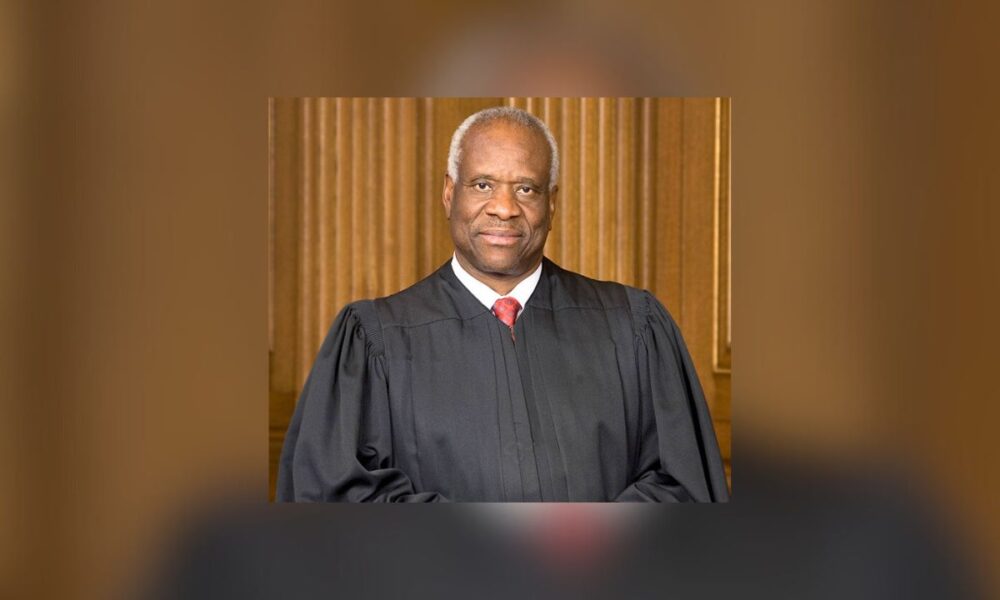Clarence Thomas is just days away from surpassing another historic Supreme Court milestone.
As of Monday, Justice Clarence Thomas has served 33 years and 236 days on the U.S. Supreme Court, placing him within striking distance of former Chief Justice William Rehnquist, who served 33 years and 239 days before his death in 2005.
Should Thomas remain on the Court through this Thursday, he will overtake Rehnquist as the eighth-longest-serving justice in American history. By mid-July, he could surpass William J. Brennan Jr., reaching seventh on the all-time list.
William Rehnquist, appointed by President Richard Nixon as an associate justice in 1972 and elevated to chief justice by President Ronald Reagan in 1986, was known for redirecting the Court from its more “liberal” Warren and Burger Court eras. A staunch federalist, Rehnquist played a defining role in decisions that limited federal power and bolstered state authority. His tenure shaped pivotal rulings on abortion, school prayer, and presidential powers, including the landmark decision that effectively resolved the 2000 presidential election in Bush v. Gore.
Clarence Thomas, 76, was appointed by President George H.W. Bush in 1991, succeeding civil rights icon Thurgood Marshall. After a contentious confirmation process, Thomas emerged as a deeply influential figure on the Court’s Republican-appointed wing. Known for his originalist and textualist judicial philosophy, Thomas has reshaped American jurisprudence in areas ranging from the Second Amendment to affirmative action to the scope of the federal bureaucracy.
His significance lies not only in his legal philosophy but also in the durability of his influence. His concurring opinions and dissents have helped chart the path for major doctrinal shifts, including recent reversals of longstanding precedents.
However, one of his important decisions is still ahead of him: whether to stay or go.
Decisions about how long a justice remains on the Court often carry major political consequences. Justice Ruth Bader Ginsburg, for instance, resisted calls from Democrats to retire during President Barack Obama’s tenure. When she died in September 2020, just weeks before the election, President Donald Trump swiftly nominated and secured the confirmation of Amy Coney Barrett. That appointment cemented a 6-3 Republican-appointed majority and paved the way for the Court’s 2022 decision to overturn Roe v. Wade, returning abortion policy to the states. Ginsburg, a critic of Roe’s reasoning but a staunch defender of abortion rights, inadvertently helped reshape the Court’s ideological makeup through her decision to remain.
Some legal analysts argue that criticism of Ginsburg’s timing is partly unfair. After Republicans won control of the Senate in the 2014 midterms, Obama’s ability to confirm a replacement narrowed significantly — as shown in 2015-16 when Senate Republicans refused to hold hearings for his nominee Merrick Garland after Justice Antonin Scalia’s death. Nonetheless, had Ginsburg stepped down between 2009 and 2014, Democrats might have retained control of her seat and reshaped the Court differently.
Barring unexpected health issues or retirement, the Court’s Republican-appointed majority is likely to persist for years. Trump-appointed justices Neil Gorsuch, Brett Kavanaugh, and Amy Coney Barrett are all in their 50s or early 60s. With President Trump just beginning his second, non-consecutive term, any retirements — including those of aging justices like Samuel Alito (W. Bush) or Sonia Sotomayor (Obama) — could allow for further Republican appointments and long-term ideological entrenchment.
Thomas’s own seat illustrates how political timing can influence the Court’s trajectory. He was nominated to replace Marshall, a Lyndon B. Johnson appointee who retired due to poor health during President George H.W. Bush’s term, allowing a Republican president to make the replacement and tipping the seat in a different direction.
If he chooses to remain, Thomas could make history by becoming the longest-serving justice in late summer 2028, still within Trump’s second term. However, this will be just before the 2028 presidential election. History indicates that the election, the control of the Senate, and his health could impact his choice at that point.
The two political parties have become increasingly aggressive in their efforts to preserve or recapture Court seats. As Justice Stephen Breyer grew older during President Joe Biden’s term, activists urged him to retire. Breyer ultimately stepped down in 2022, allowing Biden to appoint the younger Ketanji Brown Jackson — his only Supreme Court nomination.
As Thomas closes in on more longevity records, his continued presence will not only shape legal doctrine but also serve as a reminder of the political stakes tied to every seat on the High Court.
Thomas’s choice to stay or go may not only impact his legacy but also the nation.


